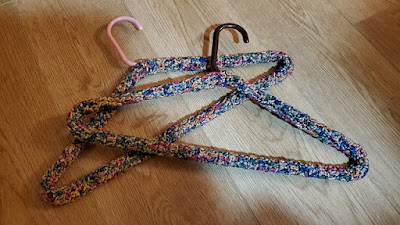Due to my ongoing elbow tendinopathy, I expected it would take months for me to finish this Lazy Diamond Boho Pocket Shawl project that should otherwise be easily completed in about a week (were I able to crochet normally). It didn't end up taking quite that long ... just over a month, actually. But whether you can make it quickly or have to exercise patience, this project will be worth the wait.
The camera doesn't begin to do justice to the true hue of the Red Heart yarn's Charcoal colorway. In person this deep gray has almost a bluish cast to it that is lovely.
Pattern designer Crystal White-Van Cleemput shares her entire process for how to make this project in a free YouTube tutorial. But I found myself struggling to follow the video because it was lacking some small details (like stitch counts), so I bought the PDF pattern, and that was very well written and much simpler for me to follow. So if you have difficulty following the video, jump over to Ravelry and buy the PDF.
One skein of the Red Heart Super Saver was almost enough to complete one of the large squares; my first skein ran out on the last round of the fifth repeat. However, I'm working this in a slightly larger gauge with a larger hook, so it might be possible for someone to get an entire large square if they were working this with the hook called for in the pattern.
I'm working this in a slightly different gauge than is written in the pattern, but I believe that that will best suit this heavy worsted weight yarn.
Two skeins is more than enough to make one large square and two small squares (the pockets). Three skeins is enough to make two large squares and at least one small square. Four skeins was not quite enough to make three large squares; the fourth skein ran out on the fourth round of the fifth pattern repeat of the third large square.
















